#soldiers' and sailors' monument
Explore tagged Tumblr posts
Text





A Different Man Aaron Schimberg. 2024
Abraham Lincoln Soldiers' and Sailors' Monument, Riverside Dr, W 89th St, New York, NY 10024, USA See in map
See in imdb
Bonus: also in this location
#aaron schimberg#a different man#sebastian stan#peter d. straus#abraham lincoln#neurofibromatosis#top hat#new york#Soldiers' and Sailors' Monument#movie#cinema#film#location#google maps#street view#2024#bonus
22 notes
·
View notes
Text
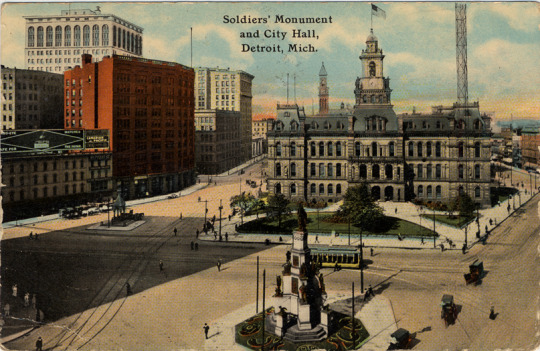
View of Soldiers' and Sailors' Monument and city hall. Pedestrians walk by as a street-car travels the road. Horse-drawn vehicles are also shown. Printed on front: "Soldiers' Monument and City Hall, Detroit, Mich." Printed on back: "Soldiers' Monument and City Hall, Detroit, Mich. The Soldiers' Monument towers to a height of 60 feet. The body is of granite and statues are golden bronze. It was completed in 1881 and cost $70,000. In the tower of the City Hall is located the second largest clock in the world. Published by Wolverine News Co., Detroit, Mich. Made in U.S.A." Handwritten on back: "I will be over at Clapham next Thursday. Have promised to spend the day with Mrs. Spelman. Will look in and see you on my way, about 12 o'clock. Love from Nellie." Card is postmarked September 18, 1913.
Burton Historical Collection, Detroit Public Library
#guess how many followers!#soldiers' and sailors' monument#detroit#detroit history#monuments#postcards#vintage#vintage postcards#1913#wolverine news co.#spelman#nellie#detroit public library
30 notes
·
View notes
Text

The Grand Army of the Republic (GAR), a brotherhood of Army, Navy, and Marine veterans who fought for the Union in the Civil War, pay tribute on May 30, 1929. At that time the holiday was known as Decoration Day. They are gathered at the Soldiers' and Sailors' Monument on Riverside Drive and 89th Street.
Photo: Bettmann Archives/Getty Images
#vintage New York#1920s#Memorial Day#Decoration Day#May 30#GAR#30 May#Grand Army of the Republic#Riverside Park#Soldiers & Sailors Monument#Riverside Drive
101 notes
·
View notes
Text

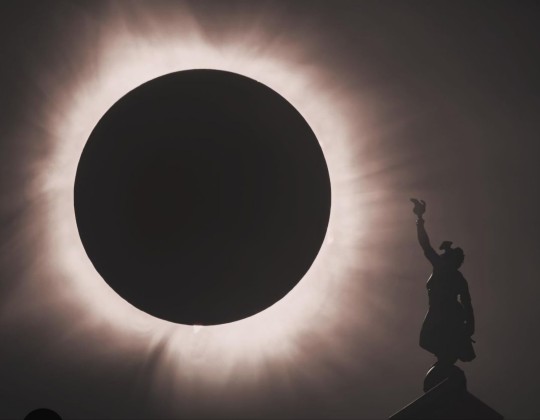


Some images from the eclipse for downtown Indianapolis, IN 4-8-24
#indianapolis#indiana#indy#317#naptown#circlecity#eclipse#eclipse 2024#soldiers and sailors monument#monumentcircle#monument circle#path of totality#eclipse totality#the ring
7 notes
·
View notes
Text
"Dark, breezy, and secluded, it was ours."
Quote randomly selected from page 71 of Megan Margulies's memoir My Captain America: A Granddaughter's Memoir of a Legendary Comic Book Artist.
Additional notes: "Ours" refers to the author and her friends. "It" refers to The Soldiers' and Sailors' monument in Manhattan, New York, the United States of America. The selection of this quote/book for American Independence Day was purely coincidental.
Quote was selected at random from a book chosen at random from my local library.
#Book#Memoir#My Captain America#Joe Simon#Monument#The Soldiers' and Sailors' monument#Megan Margulies
1 note
·
View note
Text




General Lafayette, a French officer in the American Revolutionary War, spoke at what would become Lafayette Square, Buffalo, during his visit to the United States on June 4, 1825.
#Soldiers and Sailors Monument (Civil War Monument) by Caspar Bubert#USA#General Lafayette#speech#Lafayette Square#Buffalo#4 June 1825#travel#anniversary#US history#Shea's Performing Arts Center#Shea's Buffalo#architecture#Rapp Brothers#646 Main Street#American Revolutionary War#American War of Independence#original photography#summer 2018#cityscape#sculpture#tourist attraction#landmark#vacation
2 notes
·
View notes
Text










Exploring NYC: The Soldiers’ and Sailors’ Monument in Riverside Park (February 2023)
0 notes
Text

Remember...
Remember the Marine falling on a grenade to save a friend...
Remember the bomber pilot, desperately fighting for control of his burning aircraft, ensuring his crewmembers bailed out—yet remained in the cockpit a moment too long...
Remember the nurse diligently treating injuries until the lines collapsed, only to meet her fate in a concentration camp...
Remember the young Army private leaving cover to drag an injured friend off the battlefield, only to go down himself...
Remember the naval officer surrounded by the sounds of a dying ship—holding his post with water rising, ensuring sailors under his command escape—only to find his own fate in the ocean depths...
Remember our furry friends who remained by the side of their soldier in a hail of gunfire—whether a war horse or dog—loyal to their final moments...
From the fields of the American Revolution to the rocky terrain of Afghanistan, remember those Americans who did not come home. 🙏🇺🇲
This photo is a memorial to all the war dogs and their military handlers who did not come home from Vietnam War. If you look closely, the taller portion of the monument lists the names of 300 military handlers; while the lower portion depicts the names of over 4200 war dogs who served to the end.
The memorial is titled, “The Unbreakable Bond.” Mott's Military Museum, Groveport, Ohio. October 16, 2021
By @aviationgeek71
#memorial day#remember the fallen#remember#my photography#my writing#original writing#original photography#my photo
275 notes
·
View notes
Text



The National Monument of Scotland, situated on Calton Hill in Edinburgh, commemorates Scottish soldiers and sailors who died in the Napoleonic Wars. Designed by Charles Robert Cockerell and William Henry Playfair, it was intended to resemble the Parthenon in Athens.
Construction began in 1826 but halted in 1829 due to lack of funds, leaving it incomplete with only twelve columns. This unfinished state has earned it the nickname “Scotland’s Disgrace.”
Despite this, the monument is a significant landmark, offering panoramic views of the city and symbolising Edinburgh’s neoclassical architectural heritage.
#scotland#scottish#travel#travel inspiration#places to visit#edinburgh#national monument of scotland#calton hill
187 notes
·
View notes
Text



Today in 1982 Twenty sailors were killed when the destroyer HMS Sheffield was hit by an Argentinian Exocet missile during the Falklands War. The Falklands National Monument in Cardiff bears the names of the 255 sailors, soldiers and airmen who died on the UK side. The memorial centres on a five-tonne rock from the Falkland Islands, a gift from the islanders
38 notes
·
View notes
Photo

Detroit, June 1908. "Cadillac Square, Soldiers' and Sailors' Monument and Hotel Pontchartrain from City Hall." Also the lower section of one of the city's famous "moonlight tower" arc lamps.
#vintage#1900s#street car#turn of the century#horse drawn wagon#trolleys#Michigan#pedestrians#streetcars#horse drawn cart#statue#trolley#plaza#street cars
86 notes
·
View notes
Text
Being a monument mythos fan and a statue enjoyer read: fucker will have you being insane imagining the statue freedom on the dc capitol building having a lesbian polycule with other female state capitol statues



They r in love....
Lady Victory, on top of the Soldiers and Sailors Monument in Indianapolis Indiana
Miss Penn or Commonwealth in Harrisburg PA
And ofc the goddess herself, Freedom <3
#i need to be more normal. no i dont#imagine victory and freedom protecting commonwealth NOW!#big ladies with swords protecting smaller no sword lady
12 notes
·
View notes
Text
Flat Phryne in Buffalo!

Flat Phryne's adventures on the way to Miss Fisher Con in St. Paul continue. This week, she paid a visit to Buffalo, New York!
She checked in at the Hotel Lafayette. During it's prime, the Lafayette was one of the 15 finest hotels in the United States, boasting not only elevators, and hot and cold running water and a telephone in every room. Flat Phryne enjoyed her time there before heading out to see the sites.

Flat Phryne's first stop was Buffalo City Hall, one of the largest and tallest municipal buildings in the US. The Art Deco building, designed by Dietel, Wade and Jones, and featuring sculpture by Albert Steward, Rene Paul Chambellan and William Ehrich, was completed in 1931.
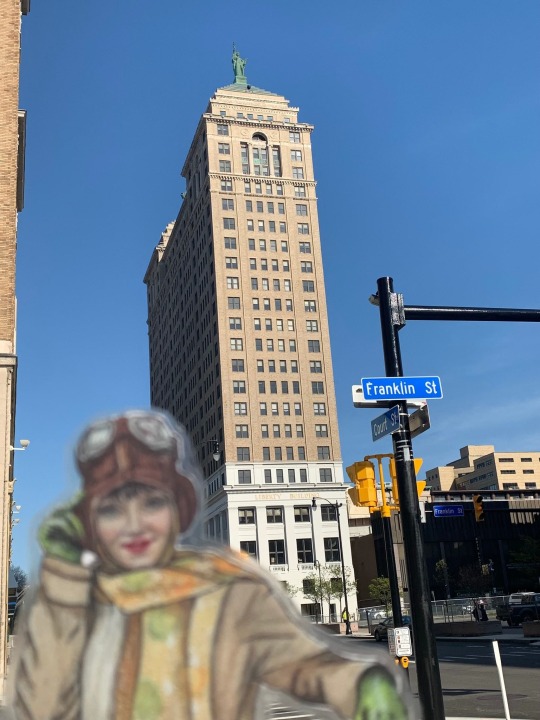
Next she made her way to the Liberty Building, built in 1925 and topped with replicas of the Statue of Liberty. She wanted to replicate Didier Pasquette's 2010 tightrope walk between the 2 rooftop statues, but it wasn't in the cards. Maybe next time!
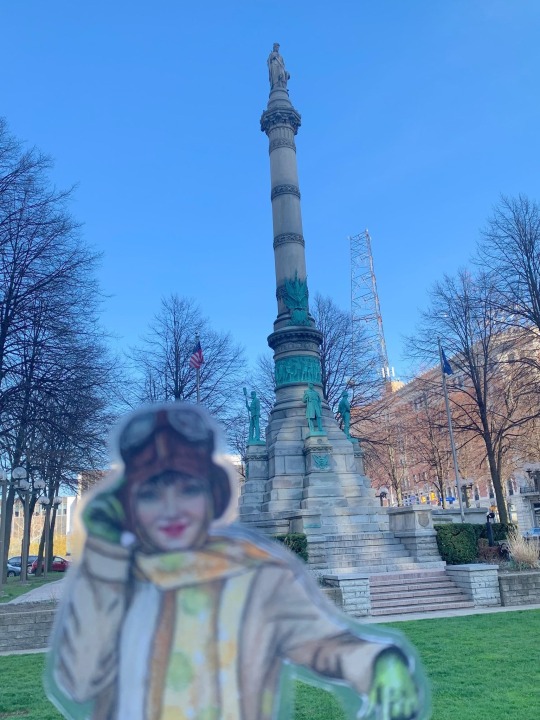
She then stopped by the Soldiers and Sailors Monument in Lafayette Park.
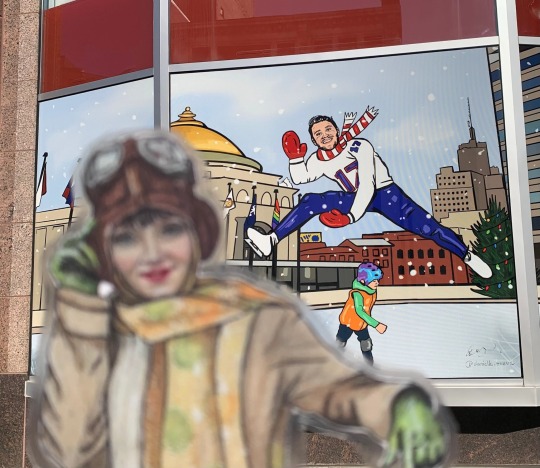
Phryne was keen to learn more about Josh Allen, the quarterback for the Buffalo Bills, though she prefers footie to American football.
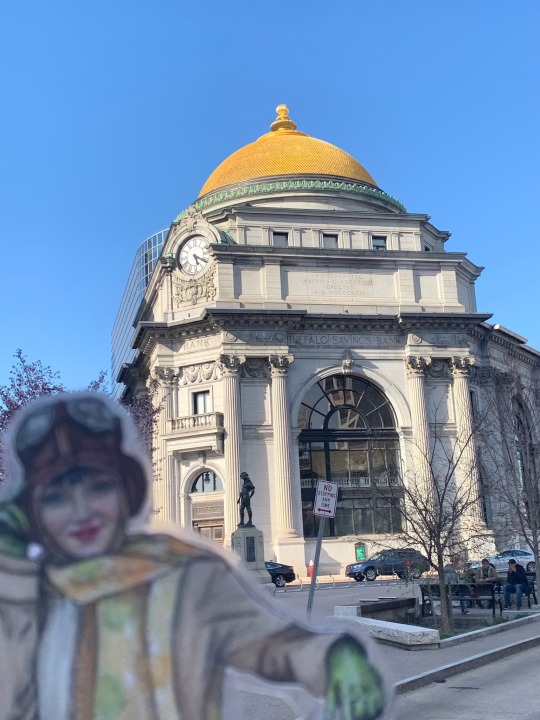
She made a quick stop to admire the Buffalo Savings Bank,
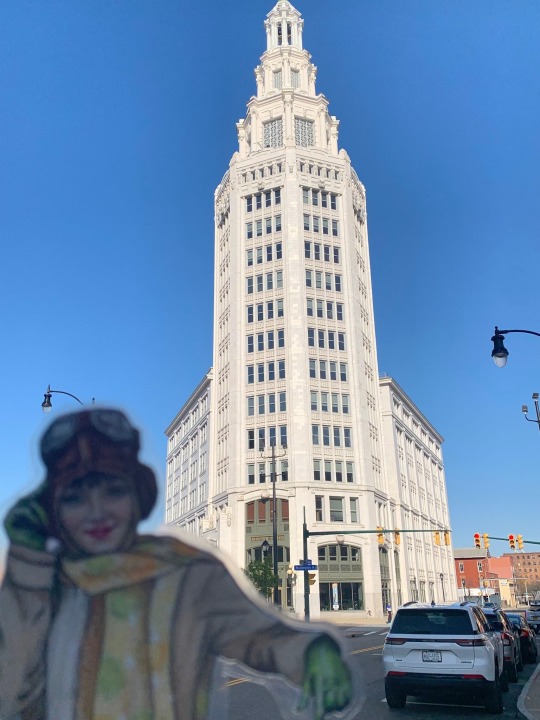
and the Electric Tower building,

before taking in a picture and enjoying the Wurlitzer extravaganza at Shea's. The Mighty Wurlitzer organ at Shea's (and in the Capitol Theatre in Melbourne!) were made just north of Buffalo.

Today, the former Wurlitzer factory is home to a brewery, events, and an amazing chocolate factory.
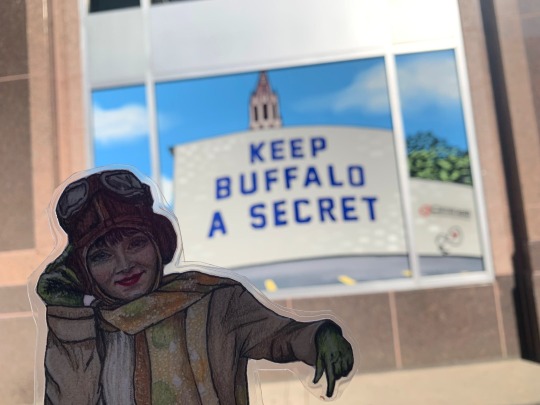
Where will Flat Phryne turn up next? Stay tuned!
#MissFisher
#MsFisher
#1920s
#1920sfashion
#1920sstyle
#1960s
#1960sfashion
#1960svintage
#1930s
#1930sfashion
#1930sstyle
#1930svintage
#shanghai
#melbourne
#mnhistory
#flapper
#phrynefisher
#adventuressescluboftheamericas
#adventuress
#stpaulmn
#stpaul
#saintpaul
#saintpaulmn
#saintpaulminnesota
#saintpaulhotel
#buffalo
#buffalony
#wurlitzer
#artdeco
#flatphryne
·
21 notes
·
View notes
Text
The Voice In The Garden by Harlan Ellison
After the bomb, the last man on Earth wandered through the rubble of Cleveland, Ohio. It had never been a particularly jaunty town, nor even remotely appealing to aesthetes. But now, like Detroit and Rangoon and Minsk and Yokohama, it had been reduced to a petulantly shattered Tinkertoy of lath and brickwork, twisted steel girders and melted glass.
As he picked his way around the dust heap that had been the Soldiers and Sailors Monument in what had been Public Square, his eyes red-rimmed from crying at the loss of humanity, he saw something he had not seen in Beirut or Venice or London. He saw the movement of another human being.
Celestial choruses sang in his head as he broke into a run across the pitted and blasted remains of Euclid Avenue. It was a woman!
She saw him, and in the very posture of her body, he knew she was filled with the same glory he felt. She knew! She began running toward him, her arms outstretched. They seemed to swim toward each other in a ballet of slow motion. He stumbled once, but got to his feet quickly and went on. They detoured around the crumpled tin of tortured metal that had once been automobiles, and met in front of the shattered carcass that was, in a time seemingly cons before, The May Co.
"I'm the last man!" he blurted. He could not keep the words inside, they fought to fill the air. "I'm the last, the very last. They're all dead, everyone but us. I'm the last man, and you're the last woman, and we'll have to mate and start the race again, and this time we'll do it right. No war, no hate, no bigotry, nothing but goodness ... we'll do it, you'll see, it'll be fine, a bright new shining world from all this death and terror.
Her face was lit with an ethereal beauty, even beneath the soot and deprivation. "Yes, yes," she said. "It'll be just like that. I love you, because we're all there is left to love, each other."
He touched her hand. "I love you. What is your name?"
She flushed slightly. "Eve," she said. "What's yours?"
"Bernie," he said.
5 notes
·
View notes
Text
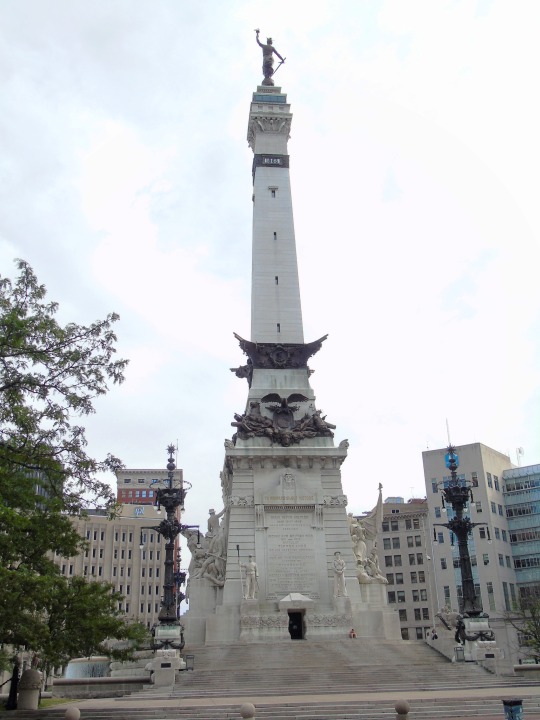
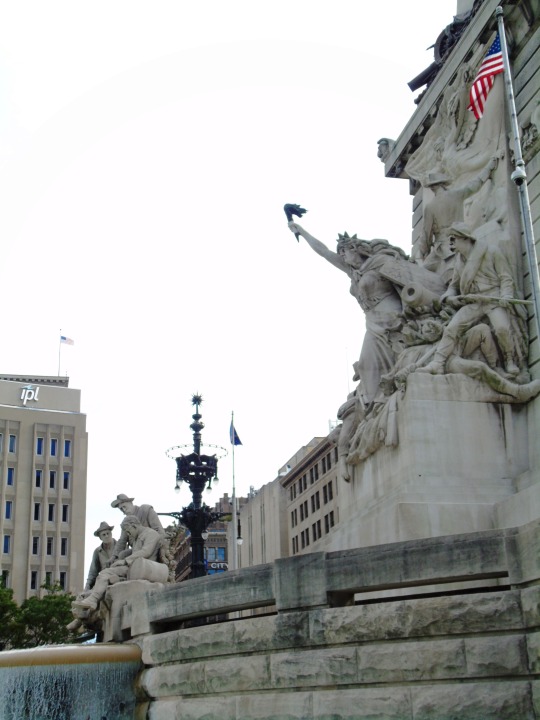
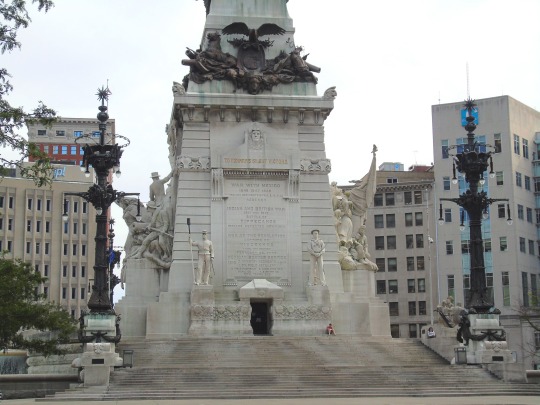
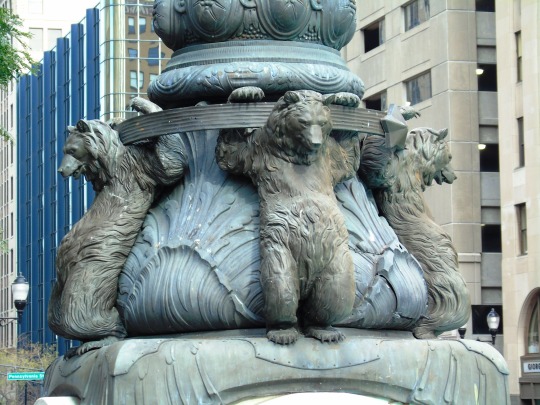
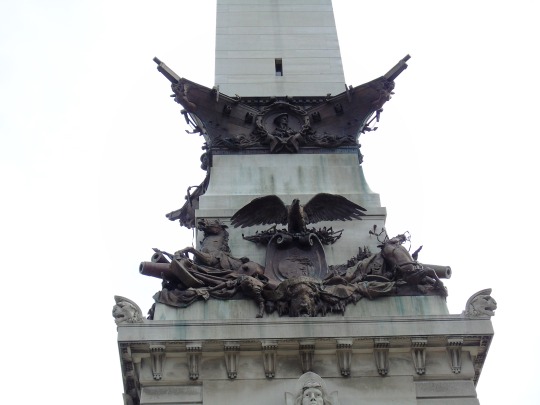
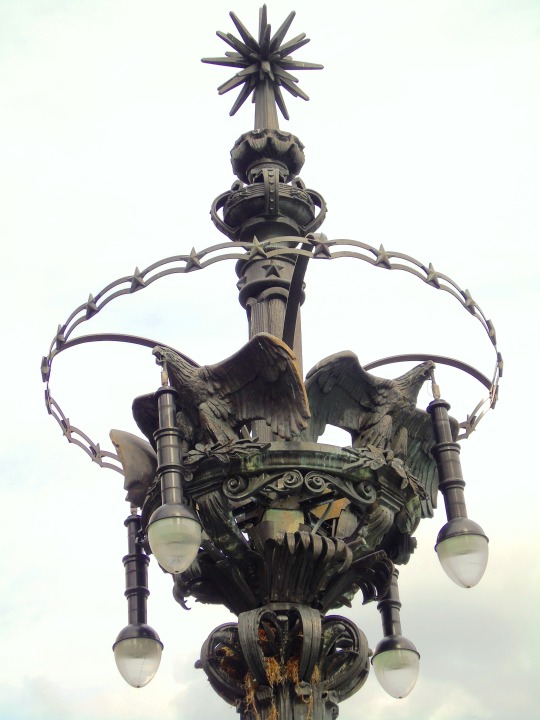
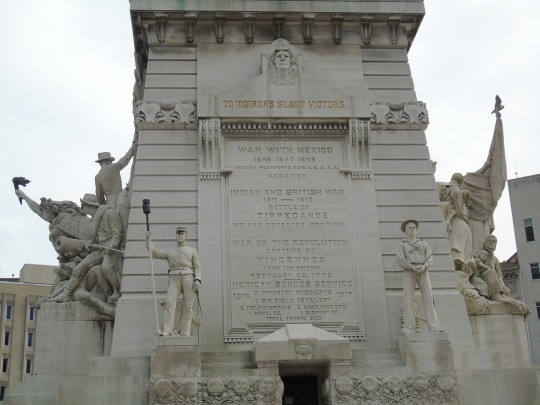


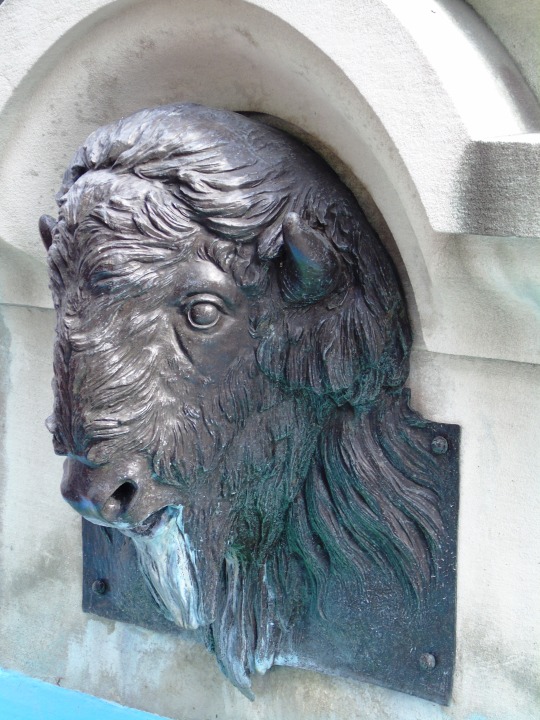


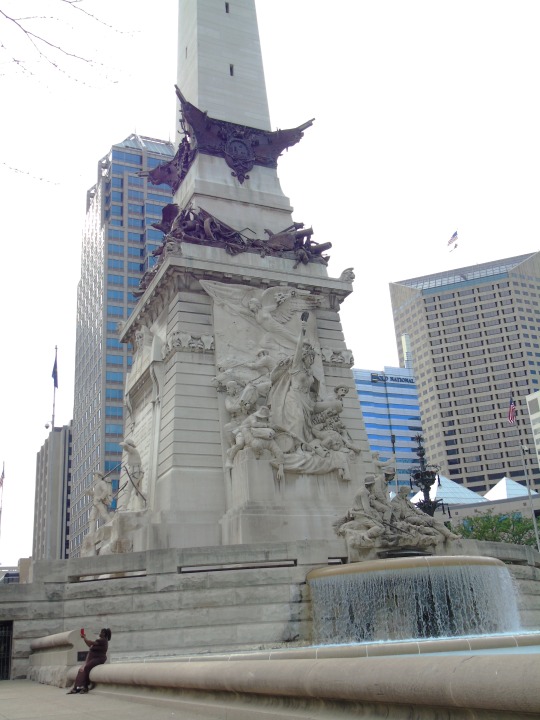

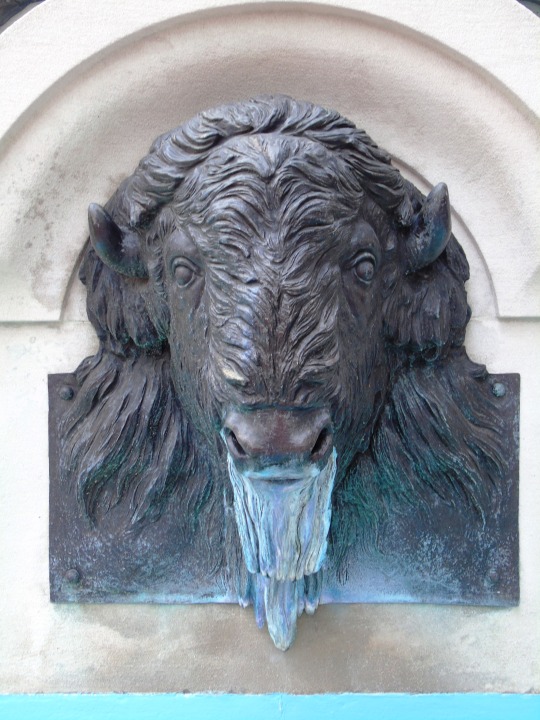
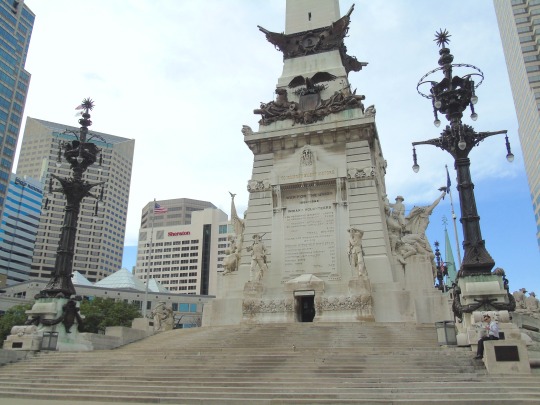
The Indiana State Soldiers and Sailors Monument was dedicated on May 15, 1902.
#Indiana State Soldiers and Sailors Monument#Bruno Schmitz#dedicated#USA#15 May 1902#anniversary#US history#Indy#Indiana#Indianapolis#travel#summer 2016#original photography#public art#fountain#cityscape#peace#war#return home#dying soldier#street lamp#downtown#Midwestern USA#Great Lakes Region#tourist attraction#vacation#landmark#architecture
2 notes
·
View notes
Text
For Liberty and the Union
The plaque on the Michigan Soldiers & Sailors monument reads Erected by the people of Michigan in honor of the martyrs who fell and the heroes who fought in defence of Liberty and Union.
Soliders and Sailors Monument at Campus Martius Park by Andrew McFarlane For this year’s Veterans Day photo, let me thank all the men & women who gave their service to this nation, especially those who gave their lives, with a couple of my photos of a powerful memorial in Detroit’s Campus Martius Park. There used to be a cool cool site Panorama of Old Detroit by Jim Moran: At the top of this…

View On WordPress
0 notes